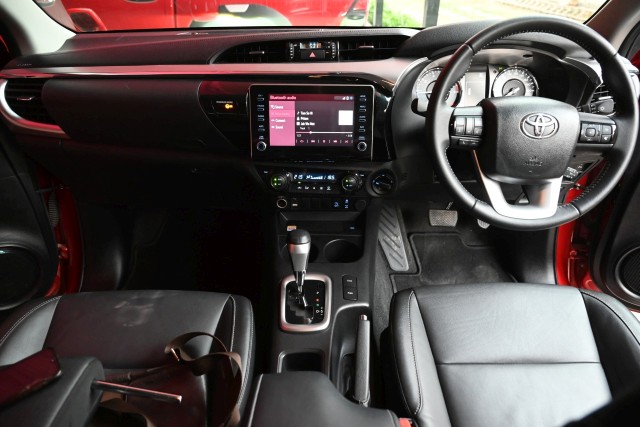
The cabin of the Toyota Hilux is spacious and the seats are comfortable, with powered adjustment settings. The ergonomics are excellent and everything—steering wheel, controls, levers and buttons—are within easy reach. There is a wide centre section, too, after all the IMV platform is a classic rigid ladder frame and a thick shaft driving the bulbous yoke at the rear with another headed up front from the transmission. Overall comfort is excellent even in the third row and the cabin feels nothing short of a safe.
Heading down the forest trail was a fun bit in itself. While I started off in “S1” based on my fellow expert’s recommendation, I soon realised the Toyota Hilux was easier to drive and manage than it appeared. Back into “D” on the auto-box, the truck trundled down the mountain unperturbed. It’s wide, yes, but with rocks on one side and a sheer drop on the other, it wasn’t the car nor me breaking a sweat. It’s 29° approach angle and 26° departure angle make it rather capable in tackling more than its fair share of rough terrain. Small rocks, or extra large pebbles, if you will, in its path were taken without any deviation from its line and the 216-millimetre ground clearance made sure that almost all of the were no big deal; the Hilux simply coasting over them as if they were non-existent.
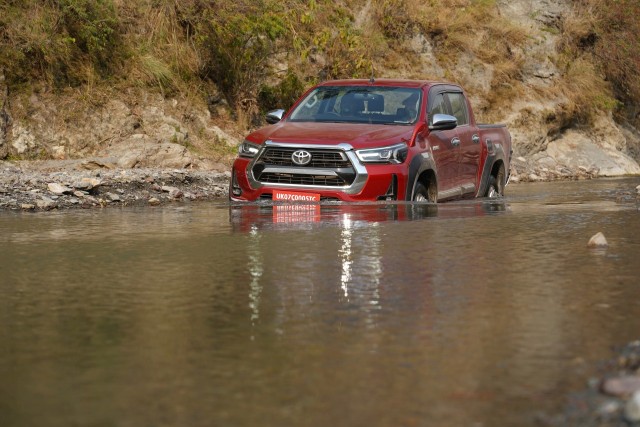
Getting down the semi-filled riverbed, there was a mix of shallow stream, deeper water formations, silt and sand, all of which the Toyota Hilux plugged through with ease. For the water sections, I ensured it was in “4H” or 4×4 high-range just to have the reassurance of front traction in case of the remote possibility of the rear breaking traction over a slippery stone underwater. No drama whatsoever.
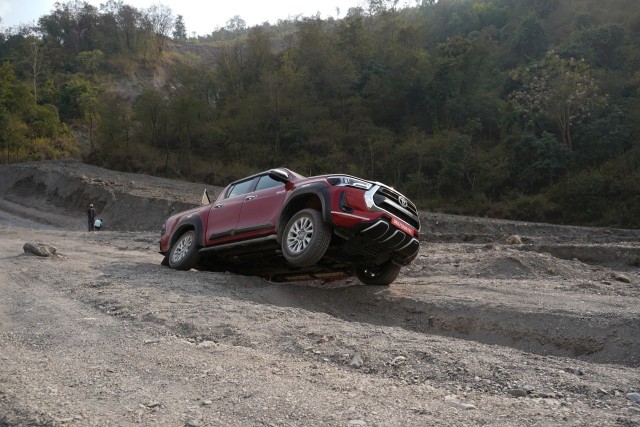
Next up were the makeshift hills to check its slope-scaling ability even with a surface of loose gravel. Heading down was with the hill descent control on, no brakes or accelerator needed. The Hilux was so nice I did it twice—once for the stills and one for video—because it felt like a run-of the-mill chore for the big, red machine. It truly is outstanding in the face of a challenge. And, while I believe the price-tag was a bit overinflated, I began to see reason. It was just as capable, if not more, than some vehicles thrice its price.

As I made my way back to civilisation, I realised how good its highway manners were, too. The length helps, of course, and even at 80 km/h, overtaking and lane changes were immediate, quick and without any perceptible roll. I did not fling it into bends but I could feel the weight lower down and it was indeed reassuring. The steering feel too is crisp when it needs to be making for sure changes of direction too with good response and feedback. I got me thinking, of course, a pick-up truck is never going to be anyone’s daily-driver. Well, almost. A lifestyle choice it may be, but it makes just as good a first car as it does a second, third, fourth car or an addition to a collector’s kitty. There is no way, I imagine, anyone can drive the Hilux and not fall for it. Its way of doing business, its capabilities, and the way the chassis fuses with the driver’s nervous system. Yes, it may appear to be a crude, rural or industrial vehicle but, and I cannot emphasize this enough, it is magnificent. Believe the hype. All of it. It’s trucking awesome.
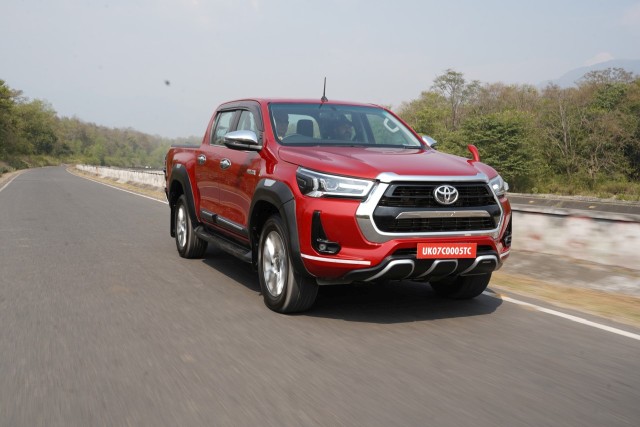
Need to Know – Toyota Hilux 2.8D 4×4 High A/T
Price: Rs 37.90 lakh (ex-showroom)
Engine: 2,755 cc, in-line four, turbo-diesel
Max Power: 204 hp @ 3,000-3,400 rpm
Max Torque: 500 Nm @ 1,600-2,800 rpm
Transmission: Six-speed, automatic, selectable four-wheel drive
Suspension: Double wishbone front, leaf spring rear
Weight: 2,212 kg


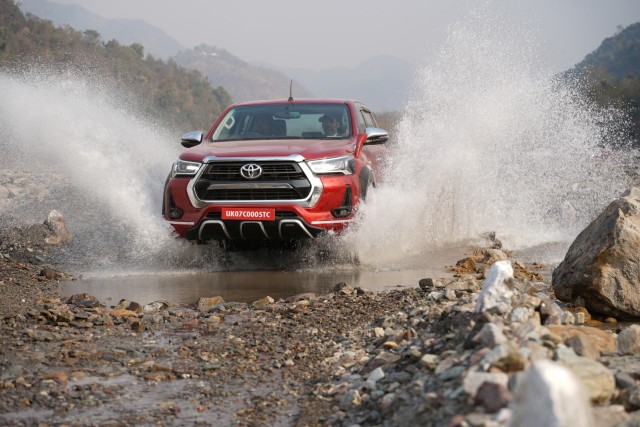


















Leave a Reply